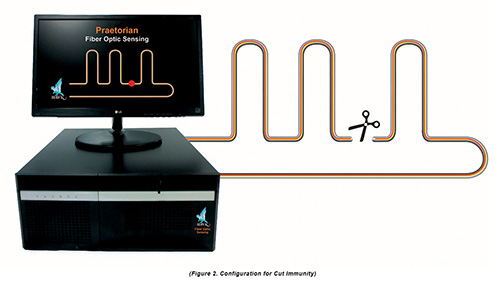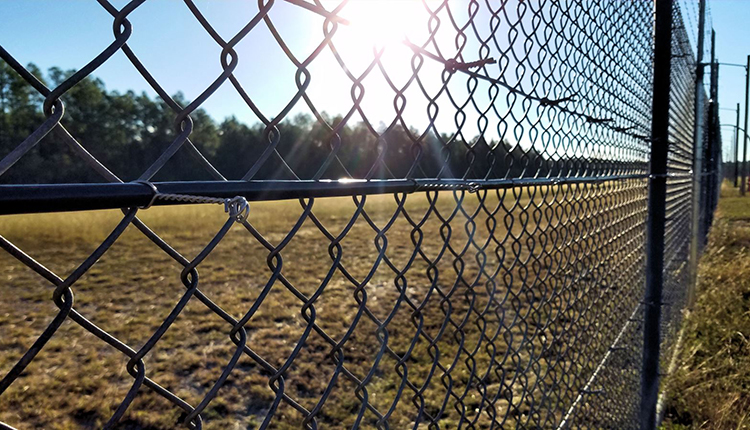The Evolution of Fiber Security System in Modern Security Solutions
The Evolution of Fiber Security System in Modern Security Solutions
Blog Article
Why Fiber Optic Security Equipments Are the Future of Protection
The change to fiber optic protection systems marks a significant development in the realm of protection, driven by their phenomenal information transmission capabilities and durability to exterior disturbances. These systems not only assist in faster and much more reliable interaction yet also provide an economical service with lowered upkeep demands. As the landscape of safety evolves alongside emerging innovations such as AI and IoT, the capacity for fiber optics to enhance and redefine safety facilities ends up being significantly apparent. However, the implications of these advancements increase crucial concerns regarding the future of safety actions and their performance in an ever-changing environment.
Benefits of Fiber Optic Equipments
One of the key advantages of fiber optic systems is their remarkable data transfer capability, which assists in the transmission of big volumes of information over cross countries without considerable loss. This particular is especially valuable for safety applications that call for the continuous monitoring and transfer of high-definition video feeds, sensing unit data, and various other important information. Optical fiber can fit the expanding demands of contemporary safety and security systems, making certain that information stays undamaged and reputable.
In addition, fiber optic cable televisions are much less vulnerable to electro-magnetic interference, which can be a considerable issue in environments with various digital tools. This resistance boosts the stability of the information being transmitted, therefore reducing the danger of information breaches or system failures. Fiber optic systems are inherently a lot more safe and secure than standard copper cable televisions, as tapping right into a fiber optic line without discovery is extremely tough.
The resilience of fiber optic cable televisions also contributes to their appeal. They are immune to environmental aspects such as dampness and temperature changes, minimizing upkeep expenses and increasing system long life. Generally, these advantages position fiber optic systems as a robust and effective choice for modern-day safety frameworks, guaranteeing trustworthy and secure data transmission.
Improved Information Transmission Rate

The capability to transfer substantial quantities of data rapidly assists in the smooth assimilation of high-definition video clip feeds and progressed analytics. Security systems can now process and evaluate info in real-time, improving response times and situational recognition. Additionally, fiber optic connections support longer transmission ranges without destruction of signal high quality, making them ideal for expansive safety and security networks.
The increased speed of fiber optic systems not only enhances the efficiency of safety procedures yet additionally lowers latency. This is specifically vital in important situations where timely decision-making can use this link avoid safety and security breaches or reduce possible threats. As organizations continue to focus on security and effectiveness, the need for fast and reputable data transmission will unquestionably solidify fiber optic systems as a foundation of modern safety and security infrastructure.
Resistance to Disturbance
Fiber optic safety systems continually demonstrate extraordinary resistance to electromagnetic interference, a critical benefit in atmospheres prone to digital sound. Unlike typical copper wires, which can be adversely affected by electro-magnetic fields, superhigh frequency disturbance, and other kinds of electric disturbance, fiber optic cables make use of light to transmit information. This inherent building makes sure that the signals remain clear and unchanged, despite bordering electronic task.
The usage of glass or plastic fibers in fiber optic technology develops a barrier versus disturbance, permitting reliable data transmission also in challenging circumstances such as industrial facilities, city areas with high digital traffic, or places near radio towers. This particular considerably minimizes the likelihood of signal deterioration or loss, making fiber optic systems specifically suitable for protection applications where integrity and accuracy of information are paramount.
Furthermore, this resistance to disturbance boosts the overall performance and reliability of security systems, making sure that monitoring and alert systems function effortlessly. In a world where security is significantly threatened by advanced innovations, the durability of fiber optic systems attracts attention as a pivotal function, reinforcing their condition as a crucial component of contemporary protection framework.
Cost-Effectiveness Gradually
Substantial cost financial savings can be achieved in time with the implementation of fiber optic safety and security systems. While the initial investment might seem greater compared to traditional copper-based systems, the lasting economic advantages emerge through lowered functional and maintenance prices (fiber security). Fiber optic cords are inherently much more durable and much less susceptible to ecological factors, which equates to lower substitute and fixing costs over their life-span
Additionally, fiber optic systems need less power to operate, which even more reduces energy costs. Enhanced information transmission capacities enable fewer repeaters and amplifiers, lessening equipment financial investment and streamlining setup procedures. The scalability of these systems likewise adds to cost-effectiveness, as organizations can expand their protection infrastructure without incurring considerable additional expenses.
One more factor to take into consideration is the boosted effectiveness in monitoring and feedback abilities that optical fiber provide. Improved real-time information transmission can bring about quicker case response times, potentially mitigating losses and liabilities connected with safety breaches. you can try here In sum, the long-lasting advantages of fiber optic safety systems not only warrant the first expense but likewise position them as an economically prudent option for companies seeking robust defense solutions.

Future Developments in Safety
Progressing innovations are readied to change protection systems, integrating fabricated intelligence (AI) and artificial intelligence to enhance threat discovery and action capacities. These technologies will certainly allow safety systems to assess substantial quantities of data visit this page in real-time, recognizing patterns and abnormalities that show prospective threats. This positive approach will certainly enable much faster decision-making and extra reliable occurrence reactions.
Additionally, the unification of the Web of Points (IoT) is leading the means for interconnected safety and security gadgets, providing comprehensive security and monitoring. Smart sensing units can pass on info concerning environmental adjustments, while automated alerts can inform safety personnel right away of suspicious activities.
In addition, the evolution of biometric technologies will additionally boost security devices. Face acknowledgment, finger print scanning, and retina recognition are coming to be more advanced, supplying layers of verification that are challenging to bypass.
Final Thought
Finally, fiber optic safety and security systems stand for a substantial development in security technology, offering unequaled information transmission rate, resistance to electro-magnetic disturbance, and long-term cost-effectiveness. As the demand for sophisticated security solutions continues to expand, the combination of fiber optics with emerging modern technologies such as AI, IoT, and biometrics will further enhance security facilities (fiber security). The mix of these innovations will certainly make sure a more safe and secure and receptive setting, strengthening optical fiber as a cornerstone of future security systems
Report this page